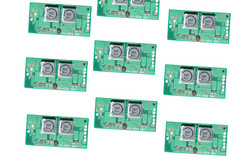Nanotechnology to enhance Moore's law
In sectors such as mobile devices, high-speed communications and health care, today markets are demanding smaller, cheaper and more energy-efficient products in greater variety. To meet the demands for innovation, industry must evolve from the micro- to the nanotechnology era. However, this requires new researchers with excellent research skills and knowledge on the specific technology. Just like any microtechology, optical lithography is a printing technology following a scaling relation similar to Moore's law – every year, the smallest features in integrated circuits are shrinking. With four industrial, five academic and three research institutes, the EU-funded project SPAM (Surface physics for advanced manufacturing) targets the development of technology that can print smaller semiconductors – 32 nm – with extreme positional accuracy. The project looked to generate know-how in surface physics for advanced manufacturing. Following the work on contact line (in)stability and surface cleanliness, project work was geared towards controlled surface roughness and structured surface metrology over the second project period. Careful control of surface roughness and surface energy was required to avoid capillary adhesion. To this end, research focused on modifying surfaces by using ion beam patterning that creates shallow nanopatterns that are rough and have spatial periodicity. Surface modification served to decrease surface energy. Both techniques were tested for wear resistance. Scientists successfully tested a newly developed method for measuring critical dimensions such as line edge roughness of the pattern features. A new hardware concept based on sequential acquisition of diffraction patterns enabled phase retrieval with coherent detection. Substantial improvement in precision for reconstructing the profile of diffraction gratings was recorded. The findings supporting the technology for lithography and metrology are a prerequisite for realising the international technology roadmap for semiconductors. Ensuring advancement in the performance of integrated circuits, the roadmap is supporting the continuation of Moore's law.







